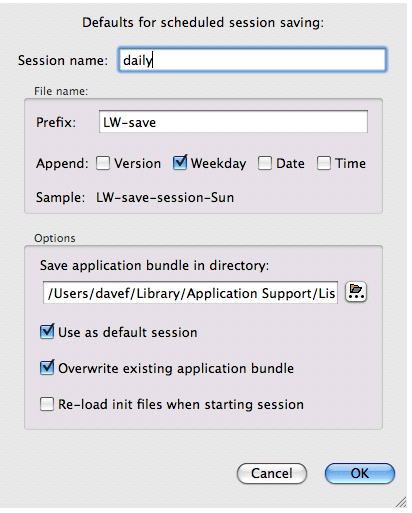






Click the Defaults... button in the Scheduled tab of the Saved Sessions controller window to raise the Save Session dialog.
Figure 5.3 Setting the defaults for scheduled session saving


Enter a name for the session in the Session name: box. This name will be displayed in the list of sessions in the Saved Sessions tab of the Saved Sessions controller window.
Under File name: you can define the filename in which to save the image (on non-Mac OS X platforms) or the name of the application bundle (on Mac OS X). The name is constructed by a prefix, optionally followed by one or more of the Version (of LispWorks), the Weekday , the Date or the Time . The full name that would be used is displayed after Sample: . Note that:
".app"
automatically.Under Options: there are additional options:
When you click OK to confirm the dialog, the session saving is scheduled.
LispWorks IDE User Guide (Macintosh version) - 25 Nov 2011